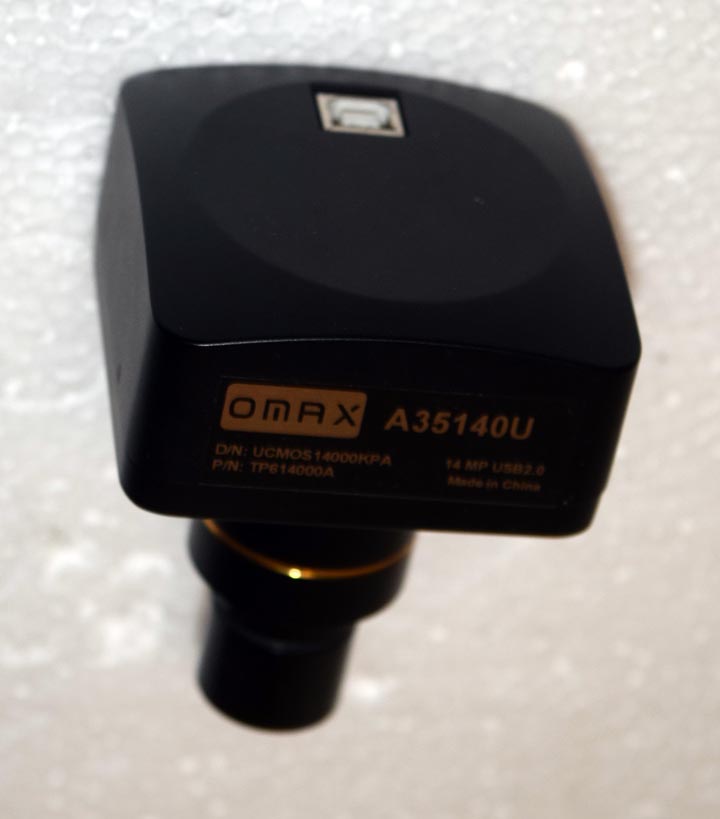
One simple method to capture both live video (and record video) and still images is to insert a USB camera, designed for microscopy, into the sleeve of an observation head or, ideally, a trinocular head. Many of these cameras are designed to be 23.3 mm diameter, fitting in place of an eyepiece, with adapter bushings for larger diameter tubes. Many manufacturers make such items - I have Omax brand cameras at 5.2, 10 and 14 MP.
Here is the 5.2 MP version. They all have a 0.5x relay lens threaded into the front. Removal allow viewing of the CCD sensor, as shown.



Here is the 10 MP version.


And, the 14 MP version.


With the Diaphot TMD, it is built as a quadnocular system, with a binocular observation head and two camera ports. The side port can directly take one of the 23.2 mm cameras, or with adapters, medium or even large format digital or film cameras. The front port is an F-mount for 35 mm SLR bodies to directly attach. In this case, I bought a Nikon D3300 specifically to attach to a Diaphot, but it is my primary camera for everyday use, as well.


An example of what can be done with the DSLR is shown below, being cropped and scaled by 1/3 from the original 24 MP image (6000 x 4000). It is an extremely tiny diatom at 100x phase contrast.

While it wasn't required here, because the diatom was mounted, not living, one very useful feature of inverted microscopes is that they generally have more room to work between the light source and condenser. This allows a ND beamsplitter to go in between them and have a high-speed synched flash follow the same light path as the normal diascopic illumination. This is very useful to capture living protists, for example. The photos above show a wireless flash trigger attached to the hotshoe. Also note that the camera is expecting feedback from a fancy lens, and is getting none - you must work in manual mode for exposure, ISO and focus!
I don't have any appropriate adapters, but many people attach DSLR cameras to the trinocular port, or even an eyepiece sleeve, of upright microscopes that don't have a built in SLR mount.